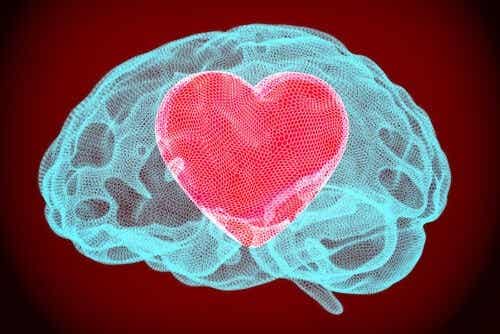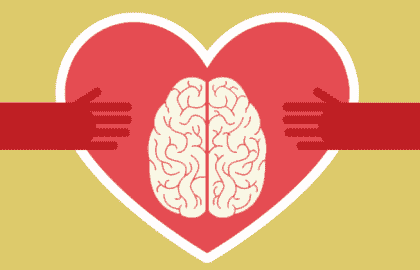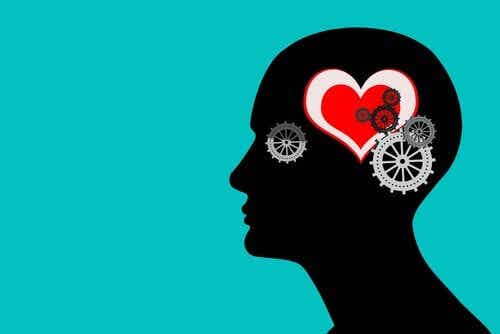Self-regulation of emotions and impulses depends on the interaction between the prefrontal cortex and the emotional centers, particularly the circuits that converge in the amygdala. In this article we talk about this fascinating process.

Last update: 16 September, 2020
No one is free if he is not his own master. In being in control of ourselves, emotional self-regulation plays a key role. Epictetus spoke these words as early as 2000 years ago and it is difficult to understand why psychology did not give emotions the right importance until 1995, when Daniel Goleman's Emotional Intelligence is published.
Contemporary neuroscience emphasizes the role of the amygdala in impulsive and anxious emotional reactions. Another part of the brain, however, presides over the processing of a more adequate response (Goleman 1996). The regulation of emotional responses can therefore be trained. According to Goleman, training our emotions can help us:
- Motivate us.
- Persevere in the effort despite possible frustrations.
- Check the pulses (emotions can manifest themselves on 4 levels: bodily, cognitive, emotional and impulses).
- Postpone rewards.
- Adjust the mood.
- Avoid that anxiety interferes with our cognitive faculties.
- Be empathetic and trust others.
"Anger, resentment and jealousy don't change the hearts of others, they only change yours."
– Shannon L. Alder –
The evolutionary cause and the need to train emotional self-regulation
The ability to obtain a rapid response from the organism e earning milliseconds in dangerous situations must have been vital to our ancestors. This configuration has remained etched in the brains of all protomammals, including humans.
The rudimentary mammalian minor brain allows for a very rapid emotional response. Nonetheless, it is at the same time a crude answer. The cells involved allow for fast but also imprecise processing; these rudimentary states of emotional chaos, based on feeling rather than thinking, are precognitive emotions (Goleman, 1996).
But there is a problem: the amygdala is frequently mistaken. It receives information about a single neuron and only a small fraction of the signals collected by the eyes or ears. The vast majority of signals reach other areas of the brain that take longer to analyze information… and make a more accurate reading (Goleman, 2015).
Self-regulation and socio-emotional learning
All emotional intelligence skills develop with learning from childhood. Socio-emotional learning programs are designed to give children what they need as their brains develop; that is why they are said to be developmentally adapted (Goleman, 2015).
The brain is the last organ in the body to reach anatomical maturity. If we look at the changes that occur each year in the way a baby thinks, behaves and reacts, or the stages of infant development, we will actually see her brain development.
Activation of the hypothalamic-pituitary-adrenal axis interferes with cognitive efficiency and learning. When we focus on worries, anger, distress or any other emotion that causes high levels of stress, we will have less attention. Emotional self-regulation helps to identify these mechanisms and adapt them to the personal context.
On the other hand, if we manage to control these small emotional incidents, working memory increases, that is, it improves the attention span needed to memorize information. Socio-emotional learning teaches us to manage these harmful emotions, which in turn promotes learning.
How to keep emotional learning?
Emotional self-regulation helps us adapt to moments of emotional chaos. If we can persevere in learning, new circuits are created; the circuits will gain more and more strength, until one day the brain works correctly without thinking twice. When this change occurs, the correct habit becomes normal (Goleman, 2015).
Of course, an adult can apply the same set of skills in their work environment to improve their performance. It is never too late to improve our skills in the field of emotional self-regulation.
“An emotion does not cause pain. Resistance or suppression of an emotion causes pain. "
– Frederick Dodson –


























